Global Plus: Hindu nationalists use sacred animal to maintain power, demonize minorities
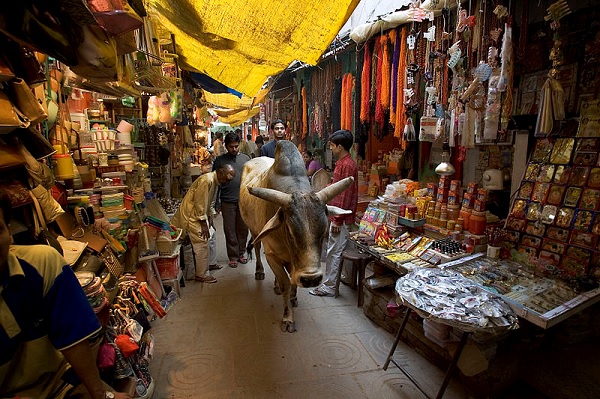
EDITOR’S NOTE—The International Association of Religion Journalists (IARJ) works closely with the Association of Religion Data Archives (ARDA), sharing many of the ARDA resources with our members. See the end of this column for helpful links. This Global Plus column comes from the ARDA series of in-depth articles exploring critical issues in international religion. The author of this column, Uday Basu, is coordinating editor of The Statesman, a national daily newspaper published simultaneously in Kolkata, New Delhi, Siliguri and Bhubaneswar.
The cow is no ordinary animal in Hindu religious tradition and civilization.
A whole corpus of literary, religious and philosophical texts on the sacred animal have been produced in India going back nearly 5,000 years to the Indus Valley Civilization.
But, today, the revered figure for Hindus has become an object of dread, thuggery and gory death for many Muslims and other minorities in the world’s largest democracy.
In the last three years, Indian society is being scarred by attacks by so-called cow vigilante groups in the name of protecting cows from theft or slaughter. Acts of violence by Hindu extremists, including lynchings caught on tape, have reached alarming proportions, shocking the conscience of a nation.
What has always been an uneasy tension balancing widespread laws against cow slaughter with the rights of non-Hindus to consume beef as a staple of their diet has been inflamed by Hindu nationalists into a wave of violence.
The victims are mostly Muslims, but violence is also directed at Dalits, once considered untouchables
under the now-outlawed caste system. Dalit groups are especially prone to be the targets as they are frequently responsible for disposing of cattle carcasses and skins.
Despite the claims of cow protection groups, the violence appears to have much more to do with politics and greed than religion.
The attacks are just one more tactic to exploit Hindu nationalism to fuel the phenomenal rise of the Sangh Parivar—a conglomerate of right wing, extremist Hindutwa outfits. At their head are the Rashtriya Swayamsevak Sangh (RSS), a right-wing paramilitary organization, and the Bharatiya Janata Party (BJP).
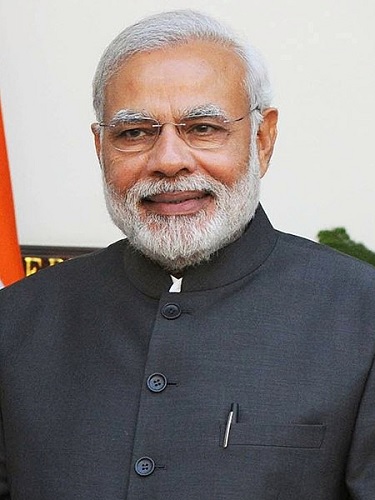
The latest wave of violence erupted in 2014 as the movement’s key leader, Narendra Modi, became prime minister.
Cow protection became a major issue in the BJP’s campaign in the 2015 elections in the state of Bihar.
This is no small matter.
The challenges posed by politically sanctioned ethnic and religious violence strike at the heart of modern India.
Research has long shown that denying religious freedoms and provoking hostility toward minorities ignites a downward cycle of persecution and violence that ends up heightening tensions and curbing civil liberties for all groups.
In contrast, protecting religious freedoms serves to reduce conflict, in part by decreasing public tolerance for vigilantism against less popular groups and guarding against the tyranny of the majority.
That can lead India forward in its quest to become the world’s fourth largest economy and to address pressing social issues in the areas of poverty, economic inequality and public health.
India’s struggle also matters to a world that looks to this strikingly diverse nation of 1.2 billion people, which has the largest numbers of Hindus, Jains and Sikhs, the second-largest population of Muslims and tens of millions of Christians – as a bellwether for religious freedom and tolerance in a democratic state.
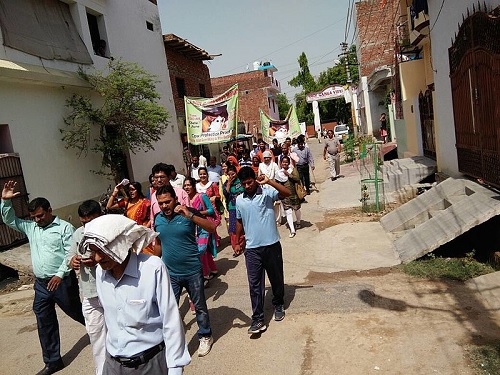
Reviving Old Tensions
India is not alone in coping with nationalist forces that seek to exploit religious and cultural prejudice for political gain. The growing anti-immigrant movements throughout Europe, an Indonesian party using trumped-up charges of heresy against Islam to defeat a Christian governor in Jakarta and the tacit support given political and religious nationalists by world leaders such as Vladimir Putin in Russia and Donald Trump in the U.S. are just some examples.
And India has faced this challenge before.
It was the British who first practiced most successfully the concept of divide and rule, setting the majority community against the minority population and keeping alive the conflict between the Hindus and the Muslims to retain their political control of the subcontinent.
The creation of India and Pakistan at the end of British rule in 1947 was itself the outcome of religious intolerance as the top political leaders of both the communities fanned communal passion so that they could get their share of the land and the wealth of the region.
However, with the political capital that came with being seen as the political force that won India its freedom, the Congress Party succeeded in establishing democracy in the country and keeping communal sentiments largely in check in the initial years following Independence.
The Constitution guarantees liberty of belief, faith and worship
and forbids the state from discrimination based on religion, race or caste.
But over the years the Congress Party became steeped in corruption and its grip on power started loosening in the late 1970s.
The BJP slowly but steadily gained political strength. Even over two decades ago it had a microscopic presence with only two members of Parliament. But, today it has formed governments in 15 states and is ruling the country at the national level.
All this has become possible because of the politics of communal divide. The BJP has built the image that it alone is ready to protect Hindu sentiments and Hindu culture, even though its brand of Hindutva is spurious. Hinduism preaches acceptance of all religious faiths and beliefs, but the BJP and its allied outfits exploit the hatred of millions of Hindus against the Muslims for historical, political and geographical reasons.
Some examples include: The 1992 destruction of the historic Babri Mosque in northern India by a mob that turned violent at a BJP rally in a centuries-old dispute over whether it was built on the site of a Hindu temple; the continuing agitation to build a Ram Temple on the site believed by some to be the birthplace of the Hindu deity Lord Ram; the 2002 communal violence in Gujurat; and increasing attacks on Christians by Hindu extremists.
The reason why the innocuous cow is now being used as a political tool is that the BJP needs a steady supply of new narratives with communal overtones for consolidating its vote bank among the majority Hindus. The cow is a potent symbol for fanning communal passion and keeping alive the religious divide between the Hindus and the Muslims.
What is particularly troubling today is both the severity of the violence, and its widespread acceptance in the ruling government as a means of maintaining power.
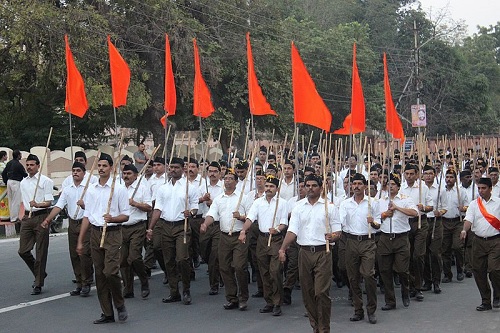
Rise of the Vigilantes
Cow vigilantism itself is not new in India, and violence over the protection of cows has occurred in the past. However, the frequency and the impunity with which it is being carried out are unprecedented,
says scholar Radha Sarkar, a writer for the Asia & the Pacific Policy Society.
Since 2014, hundreds of so-called cow vigilante groups have mushroomed in towns and villages in northern India, at times killing individuals even suspected of transporting meat.
Consider just some of the incidents that have provoked widespread concern:
- In September 2015, a mob in Dadri in Uttar Pradesh beat to death a 50-year-old Muslim man and severely injured his son after announcements were made from a nearby temple that the family had consumed beef.
- In April 2017, A 55-year-old Dalit dairy farmer with a permit to transport cows was killed by a mob of vigilantes on his way home from a market near Alwar in Rajasthan.
- In July 2016, 7 Dalits skinning the carcass of a dead cow were publicly flogged and paraded through the streets in Gujurat by vigilantes. The incident was captured on tape and circulated on social media.
Cow-protection groups claim they are preventing theft of cows, protecting cows and upholding the law. Cattle slaughter is banned in most states of India.
But even that claim is undermined by the widespread practices of extortion by cow vigilante groups. An Indian Express investigation found that vigilantes in Punjab charge cattle transporters 200 rupees ($3) per cow in exchange for not harassing their trucks. There also have been reports of cow vigilantes stopping vehicles, extorting money and stealing valuable livestock.
The BJP meanwhile gives tacit approval to the vigilantes by making cow protection a central issue.
Cow vigilante activity increased during the run-up to the Bihar Legislative Assembly Election in 2015. BJP leader Sushil Kumar Modi, who is currently the deputy chief minister of Bihar, said the election was a fight between those who eat beef and those who are against cow slaughter.
The BJP government also has sought to legitimise this dangerous political ploy by imposing a number of restrictions on the slaughter of cattle. In May 2017 it banned the slaughter of cattle for the purpose of exporting beef. Several Indian states have tightened restrictions on the slaughter of cows. In March 2015, Maharashtra passed stricter legislation banning the sale, possession, and consumption of beef.
While party leaders attempt to distance themselves from the violence, other observers see a direct connection.
Scholar Christophe Jaffrelot stated that since its formation, the RSS has intended to transform society from within, by instilling its own sense of discipline into it, which it thought was required for defending Hindus more effectively. According to him, this Hindu nationalist approach gives the act of policing a greater legitimacy.
The fact that the vigilantes
do the jobis very convenient for the rulers. The state is not guilty of violence since this violence is allegedly spontaneous and if the followers of Hinduism are taking the law into their hands, it is for a good reason — for defending their religion.The moral and political economies of this arrangement are even more sophisticated: The state cannot harass the minorities openly, but by letting vigilantes do so, it keeps majoritarian feelings satisfied. The private armies, which may be useful for polarising society before elections are also kept happy — not only can they flex their muscles, but they usually extort money (violence mostly occurs when they cannot do so, as is evident from the recent cases of lynching).
Pushing back
As the atrocities mount, there are signs of significant pushback against the BJP’s efforts.
In April 2017 the Supreme Court asked the governments of six states ~ Rajasthan, Maharashtra, Gujarat, Jharkhand, Karnataka and Uttar Pradesh (all ruled by the BJP now, except Karnataka) ~ to respond to a plea asking for a ban against cow-protection related vigilantism due to the violence perpetrated by these groups. The high court caused a major setback for cow vigilantism when it ruled that each state should appoint a police officer in each district as a nodal officer to take strict action against cow vigilantism.
Even Modi was forced in the face of public outrage to proclaim the so-called cow vigilante groups act as criminals after dusk.
What may give the BJP the most pause is the fact that it lost the provincial elections in 2015 in Bihar, a region of more than 100 million people.
Prior to the vote, Delhi Chief Minister Arvind Kejriwal tweeted, It is imp that BJP lose Bihar so that they know that hate politics will not work in this country. People want love n peace, not hate.
A test for democracy
How can I force anyone not to slaughter cow unless he is himself so disposed? It is not as if there were only Hindus in the Indian union. There are Muslims, Parsis, Christians and other religious groups here. I have been long pledged to serve the cow, but how can my religion also be the religion of the rest of Indians? It will mean coercion against those Indians who are not Hindus.
Mahatma Gandhi
Gandhi, the father of the nation, was an advocate of a ban on the slaughter of cows.
But he made it clear it was part of his doctrine of non-violence against all forms of living organisms and he knew it was madness to try to impose the belief of one community on other communities in India.
There is no question of today’s India mandating vegetarianism.
The utility of the cow or the bull as an animal also is unquestionable. Cow milk and various milk products are part of the daily menu. Beef is a staple food for the minority groups spread over different regions of the country. Bulls are used for ploughing the fields for agricultural produce. Even cow dung is used as fuel. There is no quarrel with the benevolent animal.
What is needed is a balanced approach to the use of the cow, with the nation balancing concerns for animal cruelty and the special place of the cow in Indian culture and tradition with religious and personal freedoms. Eating habits are a private matter and a democratic state cannot interfere with its citizens’ fundamental right to freedom to eat.
The need of the hour is to develop and install the right methods and devices so that minimum pain is inflicted on cows or buffalos which are fit to be used as beef.
But a lasting solution may best be found within the rich Hindu tradition of peace and tolerance.
And who can show the way? It’s none other than the greatest spiritual leader of modern India, Ramakrishna Paramahansa, who was the mentor of Swami Vivekananda. It was Sri Ramakrishna who espoused the doctrine of joto mot toto poth
(his own words in Bengali) which means there are as many ways as schools of thoughts.
His own life was a shining illustration of the truth that all religions can coexist in a harmonious relationship like the seven colours of the rainbow. Hinduism is all about tolerance and acceptance of all points of view that are based on logic.
In the end, perhaps it will be the cow, a benevolent animal that over thousands of years has achieved near-deified status among many Hindus as a symbol of non-violence and the sanctity of all life, that will help bring the nation forward and give hope to the world that all major faiths can live together in peace and harmony.
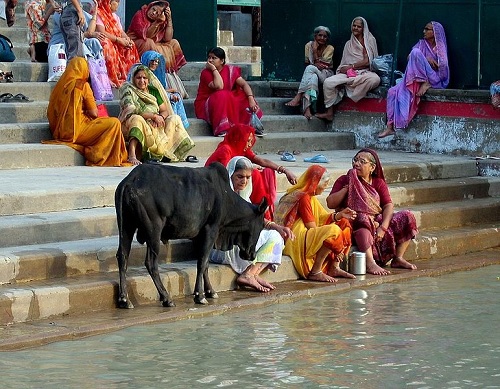
Resources
- ARDA National Profiles: View religious, demographic, and socio-economic information for India and all other Asian nations with populations of more than 2 million. Special tabs for each country also allow users to measure religious freedom in the selected nation and read the key parts of its Constitution referencing religion.
- ARDA Compare Nations: Compare detailed measures on religion in India, including religious freedom and social attitudes, with similar measures for up to seven other nations.
- Hinduwebsite.com: The site offers comprehensive information on Hinduism and Hinduism resources, including translations of major texts.
Articles
- Ahuja, Juhi, and Prakash, Pravin, Cow Vigilantism in India: Modi’s Dilemma or Legacy? The article discusses how the recent phenomenon of ‘cow vigilantism’ poses a serious threat to the political legitimacy of Prime Minister Narendra Modi. His dilemma lies in balancing his image as a strong Hindu leader with his popularity as moderniser and reformer. The inability to find a balance that disavows violence threatens to leave behind a legacy of religious extremism.
- Jaffrelot, Christophe, India’s Democracy at 70: Toward a Hindu State. Since the rise to power of the Bharatiya Janata Party (BJP) in 2014, BJP-ruled states have passed laws which have reflected the Hindu-nationalist ideology of this party, the author states. These laws and the activities of Hindu nationalist vigilantes (in particular those protecting the sacred cow) are transforming the members of some minorities—mostly India’s Muslims, but also its Christians—into second-class citizens.
Books
- Guha, Ramachandra, India After Gandhi: The History of the World’s Largest Democracy. A comprehensive book by an esteemed scholar.
- Jaffrelot, Christophe, Religion, Caste and Politics in India. The book tracks India’s tumultuous journey of recent decades, exploring the role of religion, caste and politics in weaving the fabric of a modern democratic state.
Image Credits
- Image © Jorge Royan / http://www.royan.com.ar, via Wikimedia Commons [CC BY-SA 3.0]
- Image by Narendra Modi, via Wikimedia Commons [CC BY-SA 2.0]
- Image by Powerfulindia9, via Wikimedia Commons [CC BY-SA 4.0]
- Image by Suyash Dwivedi, via Wikimedia Commons [CC BY-SA 4.0]
- Image by Barry Silver, via Flickr [CC BY 2.0]
